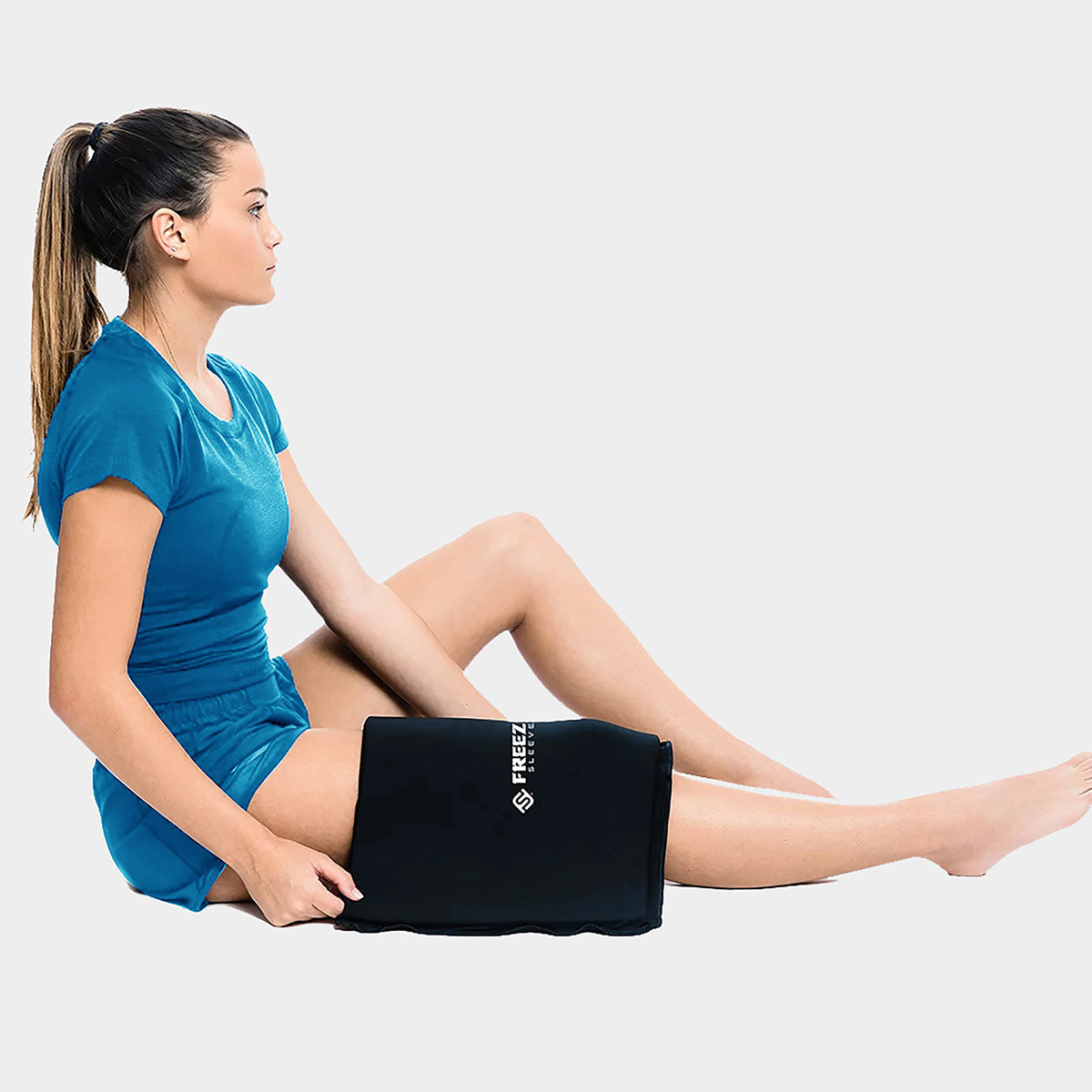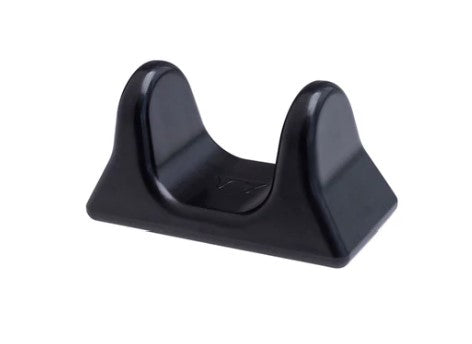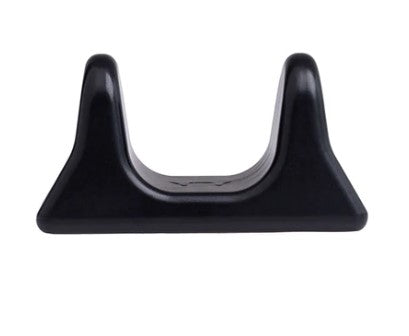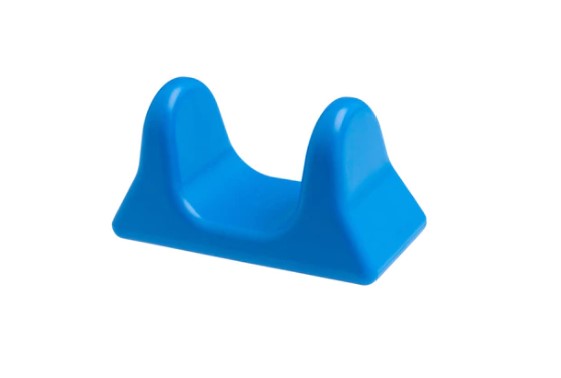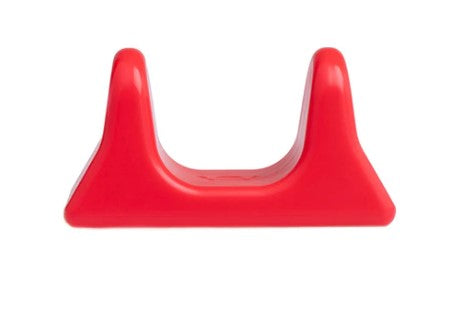Throughout my years of strength training, I have experienced injuries and setbacks: tendonitis, stress fractures, torn muscles, joint dislocations, herniated discs...the list goes on forever. Before my injuries, I had read about lifters coming back from major injuries and competing again, and I thought that I could relate to their stories from my own personal setbacks. It wasn't until I was sitting eye to eye with the neurosurgeon and discussing the possibility of major back surgery that I first had that hollow feeling in my stomach.
The events leading up to this were a combination of stupidity and following poor advice. The first time I hurt my back I was box squatting. I was wearing running shoes and using piss poor form after almost no warm-up. After a couple weeks of rest and treatment, I was right back at it, but nothing was the same. My lower back would become fatigued while wearing gear and training, and my feet and my legs would often go numb while running.
My explanation for these feelings was that I had a weak back and needed to work harder to strengthen the muscles around my spine. This seemed to work for about five years. The stronger my back was, the less it hurt. It allowed me to deploy to Afghanistan and compete on the platform with minimal pain. But this was at a cost: not knowing the extent of the underlying injury.
Slowly, workout by workout, having a strong back was not enough. At first it was just a little more pain after a training session. I foam rolled more and took more anti-inflammatory medication. I was able to train through the pain. I went through bottles of
Blue Heat, but eventually it got to the point where I was only able to complete one assistance movement after the main lift. Not too long after, it was only the main lift. And then nothing.
I hit a wall and I couldn't train my way through it. My legs were constantly numb and in pain, and my lower back burned with fatigue at all times. The doctor took x-rays, sent me to get an MRI, and referred me to a back specialist that tried injections. These injections were successful for a short period of time but, just like every other band-aid I had used, I was finally left with no more options. It was time to see a neurosurgeon.
In a matter of fact sort of way, the surgeon informed me that I had two ruptured discs, bone abnormalities, and a fracture in one of my vertebra. He then told me the condition was surgically repairable. This led to a giant sigh of relief on my part. He described the procedure to me. He would fuse the L4-L5 and L5-S1 and remove the broken bone fragments and spurs. In my mind, it was not going to be a problem; a couple of months and I'd be back at it. However, he took some of the wind out of my sails when he told me that recovery would be a year with a 20-pound lifting restriction. I was skeptical. I had been injured before and I had a hard time believing I would not bounce back. As the surgery date came closer I continued to do what I could to maintain strength.
Then there was surgery day.
I laid there in the cool waiting room already doped up on anesthetic. All I remember was the mask going on and them asking me to count backward from ten. I made it to about nine. The next thing I knew I was laying on my back in excruciating pain, with the doctor telling me to wake up. Six hours had passed, and I knew right away that I was in for much more than I expected. They wheeled me into the room and immediately the bullshit ensued. They were trying to move me off the surgical bed and onto the recovery bed. This would probably have gone fine if I didn’t weigh 270 pounds; the three nurses were at a complete loss.
It was less than 10 minutes out of surgery and I already had to climb off one bed and onto another. This sounds like the easiest task in the world — no big deal right? I have to admit, I have never had to do something that difficult in my lift. No deadlift or squat or ruck march could compare to the effort I had to exert to move the two feet between the beds. They could not get the morphine drip going fast enough for me. I could not believe how much pain I was in. What the hell had I agreed to?
The next few days consisted of them trying to cajole me out of bed to move and me begging to be left alone. One of the stipulations for leaving the hospital was urinating on my own with no catheter. I am sure some of you my cringe and some of you may laugh at my expense at this next part. Taking a piss on my own was proving to be quite a challenge, which resulted in the nurse re-inserting the catheter two more times. When I was finally able to piss it was out of sheer fear of the nurse abusing my pride again.
After what seemed like forever, it was time to go home. I was in a brace and had to use a walker like a crippled old man, but I was getting the hell out of there.
I did not waste a minute when I got home. I practiced walking about the house with my walker as much as I could. Within a few days I ventured outside. I was feeling pretty down and depressed at this time. I didn’t believe I would ever be able to walk normally, let alone train. It took me a couple weeks to start walking with a cane, and then I walked my first quarter mile, than half a mile. At twelve weeks I was told I could lose the brace and cane. It felt amazing but I had still not walked over two miles yet. Once I was free of the brace I started to push it hard. I had gained about 15 pounds over the last eight weeks. That was something I could work on right then. My feet didn’t really agree with long slow walks every day so I moved onto the elliptical. I started light floor press workouts and some band work, then added in body weight squats, crunches and good mornings.
That brings my story up to the last couple few weeks. The Army decided my back made me unfit for duty; they started the medical evaluation board process. They believe I will never be able to perform my job again. I had started to believe that I might not be able to squat or deadlift again. I reached out to various sources and people just said it was unlikely that I would ever be able to compete again.
But this was all opinion based. The surgeon was the most optimistic, saying that in a couple of years I might compete. I was feeling pretty down about the whole deal until I noticed Louie was doing a Facebook Q&A. I gave him a brief overview of what had happened and within minutes his response was what I had been looking for. If one person could gauge an injury and the likely hood of ever competing again it would be him. And with overwhelming support he said, without a doubt, YES.
I continue to change my training. I stopped the work on the elliptical and started walking a steep incline on the treadmill for 40 minutes a day. I am slowly increasing the weight of my floor press and adding some weight to the other movements. This brings my experience of “Strength Training in the Military” to an end. It will be strange to move on to another career field, but I know that what ever I do, I will be back on the platform.
You can follow my recovery on my Facebook page at www.facebook.com/GorillaStrengthTraining.
Jesse Pierce, SFC, competed in track and field and played football into college before joining the military. He has been serving in the Army for the last ten years with multiple deployments to Iraq and Afghanistan. He has been involved in strength training since 1997.


















































